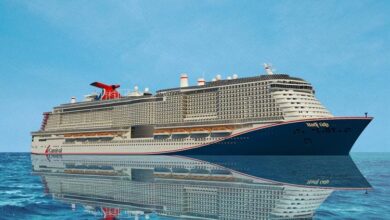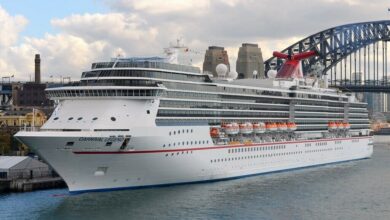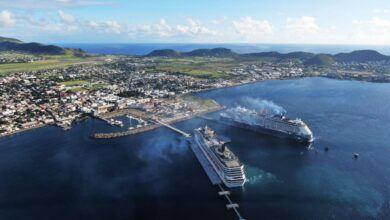
Carnival Cruise Line Increases Onboard Security
Carnival Cruise Line increases onboard security, implementing a range of new protocols and technologies. This proactive approach aims to enhance safety and guest experience, but how will these changes affect your next cruise?
The recent enhancements to Carnival’s onboard security protocols represent a significant step in the cruise line’s commitment to passenger safety. These measures include updated boarding procedures, enhanced surveillance systems, and new training for staff. This detailed look explores the rationale behind these changes, their impact on guests, and comparisons with other cruise lines.
Carnival Cruise Line Security Enhancements
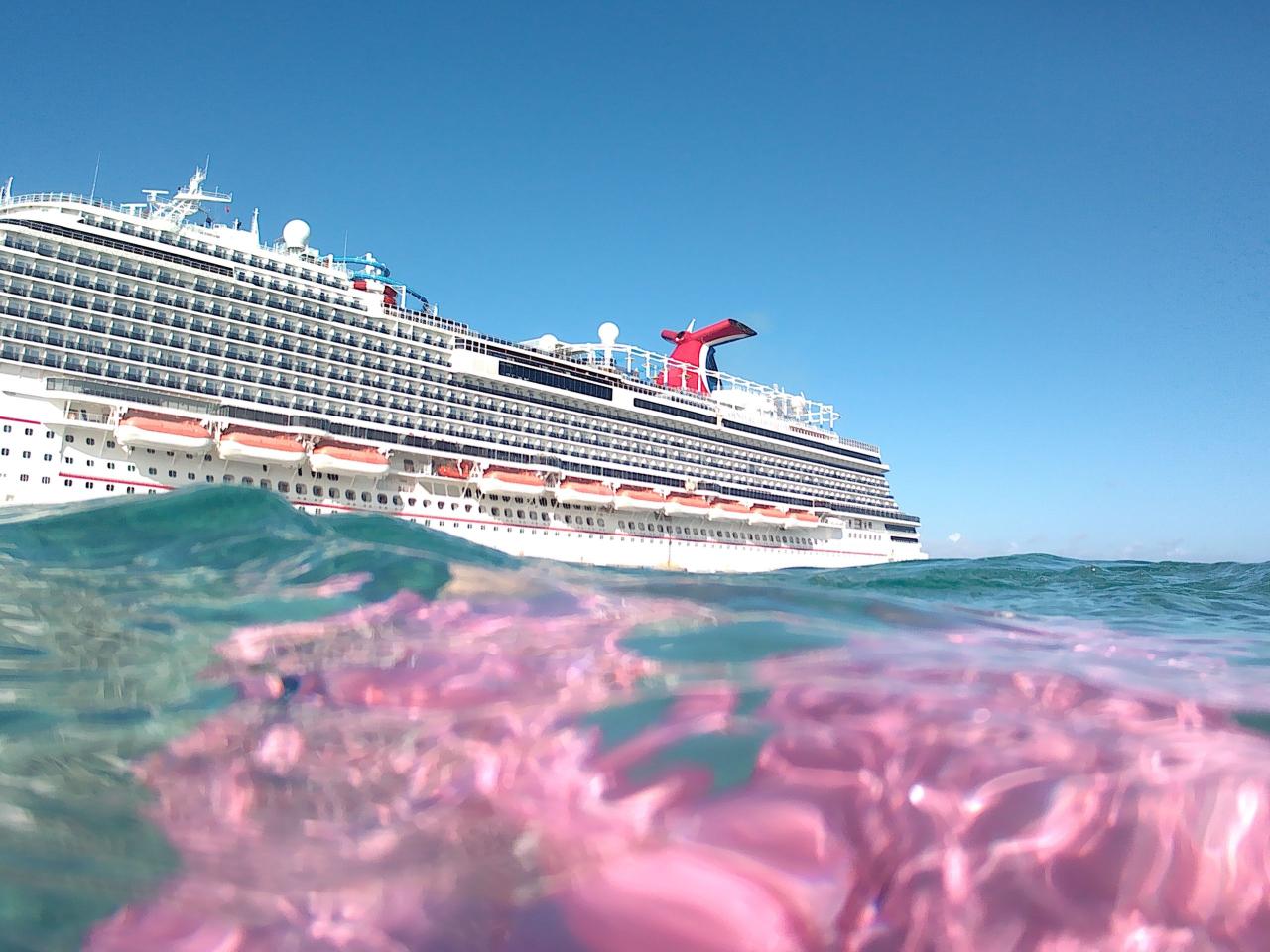
Carnival Cruise Line has consistently prioritized the safety and security of its passengers and crew. Recent enhancements to onboard security protocols reflect a proactive approach to mitigating potential threats and ensuring a safe and enjoyable cruise experience. These measures are designed to maintain the highest standards of security while allowing for a smooth and pleasant travel experience.
Summary of Security Measures
Carnival Cruise Line has implemented a multifaceted approach to enhance onboard security. This includes personnel training, technological advancements, and improved procedures for passenger and crew interaction. The goal is to create a more secure environment without compromising the relaxed atmosphere that is part of the Carnival experience.
| Security Measure | Description | Rationale |
|---|---|---|
| Enhanced Passenger Screening | Passengers are now subject to enhanced screening procedures upon boarding, including more thorough bag checks and identity verification. This includes utilizing advanced security technology such as facial recognition and improved background checks. | To detect potential threats more effectively, prevent contraband from entering the ship, and enhance the overall security of the passenger population. |
| Increased Security Personnel | The number of security personnel onboard has been increased, and their roles have been redefined to better address potential threats and provide support for the existing security protocols. Security officers are strategically positioned throughout the ship, and are better trained in conflict resolution and crisis management. | To provide greater surveillance and responsiveness to incidents, and to foster a sense of security for all passengers and crew members. |
| Improved Communication Protocols | Communication protocols between security personnel and other departments have been streamlined. This includes improved communication channels for reporting suspicious activity, and quicker response times for emergency situations. This also includes training for all staff to identify and report suspicious activity. | To ensure efficient information sharing, quick response to incidents, and improved coordination amongst different teams. This also allows for a faster and more efficient response to emergencies. |
| Advanced Security Technology | Carnival is implementing advanced security technologies, such as improved surveillance systems and access control measures. This includes enhanced camera systems, facial recognition software, and more sophisticated access control systems for restricted areas. | To deter and detect potential threats, and to enhance the overall security of critical areas on the ship, such as restricted zones and areas of high traffic. |
Rationale Behind Enhancements
The recent security enhancements are a direct response to evolving security concerns and potential threats. These concerns are not limited to traditional threats, but also include more nuanced and emerging issues, including the potential for disruptive behavior, coordinated attacks, and the need for constant vigilance against emerging threats.
Impact on Guest Experience
Carnival Cruise Line’s enhanced security measures, while crucial for passenger safety, inevitably introduce changes to the guest experience. These adjustments, ranging from boarding procedures to onboard activity access, will undoubtedly affect the pre-existing rhythm and flow of the cruise. Understanding these potential impacts is key to managing expectations and ensuring a smooth and enjoyable voyage for all.
Carnival Cruise Line’s recent boost in onboard security measures is a smart move, especially considering the unfortunate news that the Carnival Cougar cruise is no longer sailing. Given the recent news about the Carnival Cougar cruise being discontinued , it makes sense that they’d be prioritizing safety and security on their remaining vessels. This heightened security will hopefully ensure a smooth and worry-free experience for all passengers on future cruises.
Potential Impacts on Passenger Flow
The implementation of new security protocols will likely impact passenger flow, particularly during embarkation and disembarkation. Longer queues and potential bottlenecks at security checkpoints are expected. Cruise lines often implement staggered boarding times and multiple boarding points to mitigate these issues, but the extent of the change depends on the specific security measures adopted. Efficient passenger management strategies will be critical to maintaining a positive experience.
Embarkation/Disembarkation Procedures
Passengers can anticipate changes in embarkation and disembarkation procedures. These changes may include more rigorous screening procedures, increased baggage inspection, and potentially longer wait times. The introduction of new security checkpoints, coupled with the need for increased staff, will almost certainly lead to a more structured and possibly slower process. Passengers should prepare for potential delays and plan their travel time accordingly.
Onboard Activities
Onboard activities might also be affected. Access to certain areas, like specific restaurants or entertainment venues, could be restricted or require additional security checks. For example, restaurants with high-traffic or potentially vulnerable areas might have modified entry protocols. This will be especially noticeable during peak times.
Guest Reactions to New Security Measures
Guest reactions to these security enhancements will vary. Some passengers might be apprehensive, concerned about delays and potential inconveniences. Others may be supportive, recognizing the importance of enhanced safety measures, particularly if they have experienced similar security measures in other travel sectors. A significant portion of passengers may be indifferent, simply accepting the changes as part of the new normal in the travel industry.
Comparison of Boarding and Access Procedures
| Aspect | Old Procedure | New Procedure |
|---|---|---|
| Boarding | Casual and quick entry with minimal checks | More structured entry with potential checkpoints, increased staff, and potential queues |
| Specific Areas (e.g., restaurants) | Open access to most areas without stringent requirements | Access to specific areas may be restricted or require security checks; enhanced surveillance and potential queuing. |
| Baggage Handling | Limited inspection of baggage | More rigorous inspection of baggage, possibly with X-ray or manual checks |
| Access to restricted areas (e.g., crew quarters) | Unrestricted access | Access to restricted areas may be severely limited and require specific credentials. |
Comparison with Other Cruise Lines
Carnival Cruise Line’s recent security enhancements are a significant step, but how do they stack up against other major cruise companies? Understanding the industry-wide approach to safety and security is crucial to evaluating Carnival’s initiatives. A comparative analysis will highlight both shared and unique strategies, providing insight into the overall cruise line security landscape.Carnival’s efforts to bolster security are part of a larger trend in the cruise industry, where passenger safety is paramount.
The industry recognizes the importance of proactive measures and consistent training to deter potential threats and ensure a smooth and secure cruise experience.
Carnival Cruise Line’s recent announcement about enhanced onboard security measures is a smart move, especially considering the recent ransomware attack that affected three of their brands, including Carnival, Carnival Corp ransomware attack affected three brands. It’s a proactive response to bolstering guest safety and trust, a crucial step after such a significant incident. These heightened security protocols should help to reassure passengers and maintain the reputation of the cruise line.
Common Security Protocols
The cruise industry shares several core security protocols to maintain a high level of safety. These protocols are developed and implemented to safeguard passengers and crew alike, reflecting a collective commitment to safety. These include rigorous background checks for all employees, enhanced passenger screening procedures at embarkation points, and continuous surveillance throughout the vessel. Security protocols are designed to be adaptable to evolving threats and are frequently reviewed and updated to maintain their effectiveness.
Unique Carnival Approaches, Carnival cruise line increases onboard security
While sharing common security protocols, Carnival may have implemented some unique or innovative approaches. These initiatives could range from specific technologies used for passenger identification and access control to unique training programs for crew members. These are designed to provide an extra layer of protection and a distinctive cruise experience.
Industry-Wide Security Comparison
| Cruise Line | Enhanced Passenger Screening | Crew Training Programs | Security Technology | Unique Approaches |
|---|---|---|---|---|
| Carnival Cruise Line | Enhanced photo identification procedures, advanced biometric screening at embarkation. | Comprehensive security awareness training, specialized drills, and active shooter training for crew. | Facial recognition technology in high-traffic areas, advanced access control systems. | Utilizing predictive analytics to identify potential security risks and proactive measures for crew preparedness. |
| Royal Caribbean International | Advanced passenger identification systems, advanced security protocols for baggage and cargo. | Extensive crew training programs emphasizing security awareness, emergency response, and threat assessment. | Advanced passenger tracking system, enhanced security protocols for crew and passenger access to restricted areas. | Utilizing advanced maritime security standards and guidelines, implementing stringent protocols for passenger and crew safety. |
| Norwegian Cruise Line | Biometric verification systems, advanced security measures for boarding procedures. | Crew training programs focusing on safety awareness, emergency response procedures, and active shooter preparedness. | Advanced surveillance technology, security cameras in critical areas. | Implementation of a multi-layered security approach, utilizing cutting-edge security technology. |
| MSC Cruises | Robust passenger identification procedures, enhanced security checks for luggage and personal items. | Crew training programs focusing on crisis management, security awareness, and incident response protocols. | Advanced security systems for luggage handling, enhanced surveillance in common areas. | Implementing a rigorous approach to crew selection and background verification. |
The table above provides a general comparison, and specific details may vary based on individual ships and current security protocols.
Carnival Cruise Line’s recent boost in onboard security measures is a smart move, especially considering the current travel climate. It’s important to prioritize safety, and this proactive approach is reassuring. With increased security, passengers can focus on the fun of their vacation, like perhaps exploring the vibrant atmosphere at the upcoming Asta in New York trade show, asta in new york.
Ultimately, enhanced security on cruises like these helps maintain a positive and enjoyable experience for everyone.
Technological Advancements in Security
Carnival Cruise Line is constantly innovating its security protocols, integrating cutting-edge technologies to enhance passenger safety and security. These advancements are designed to provide a seamless and reassuring experience for all guests while maintaining a high level of protection. The integration of these technologies also serves to deter potential threats and improve response times in case of emergencies.
Advanced Surveillance Systems
Carnival’s enhanced security infrastructure incorporates sophisticated surveillance systems. These systems leverage high-resolution cameras strategically placed throughout the ship, capturing real-time footage of public areas and key access points. Advanced image recognition software is employed to identify and track individuals or objects of interest. This proactive approach allows security personnel to monitor activities effectively, and potentially prevent or respond swiftly to any suspicious occurrences.
Biometric Identification
Biometric identification technologies are playing an increasingly important role in enhancing access control and verifying identities. This approach employs unique biological characteristics, such as fingerprints or facial recognition, for secure authentication. Implementation of these systems minimizes the potential for unauthorized access to restricted areas, while ensuring quick and accurate identification.
Data Flow and Security Protocols
| Location | Process | Security Protocol |
|---|---|---|
| Guest Check-in | Guest identification and verification using biometric data. | Data encryption and secure transmission to central security systems. |
| Public Areas | Real-time video surveillance and data analysis. | Data encryption and access control to designated security personnel. |
| Emergency Response | Centralized monitoring of security alerts and immediate response protocols. | Data redundancy and secure communication channels for rapid dissemination of information. |
| Access Control Points | Biometric verification of personnel and guests. | Access restrictions based on predefined security levels and roles. |
This table illustrates the streamlined flow of data and security protocols across the ship. The secure transfer of data between various points on the ship ensures a coordinated response to potential threats, while maintaining a high level of data protection. Data encryption is a crucial component of these protocols to safeguard sensitive information.
Carnival Cruise Line’s recent boost in onboard security measures is a smart move, especially considering the current travel landscape. While other cruise lines are focusing on different aspects, like Avalon’s recent christening of two river cruise ships, avalon christens two river cruise ships , it’s reassuring to see Carnival prioritizing passenger safety. This proactive approach ultimately benefits everyone enjoying a cruise vacation.
Public Perception and Media Coverage
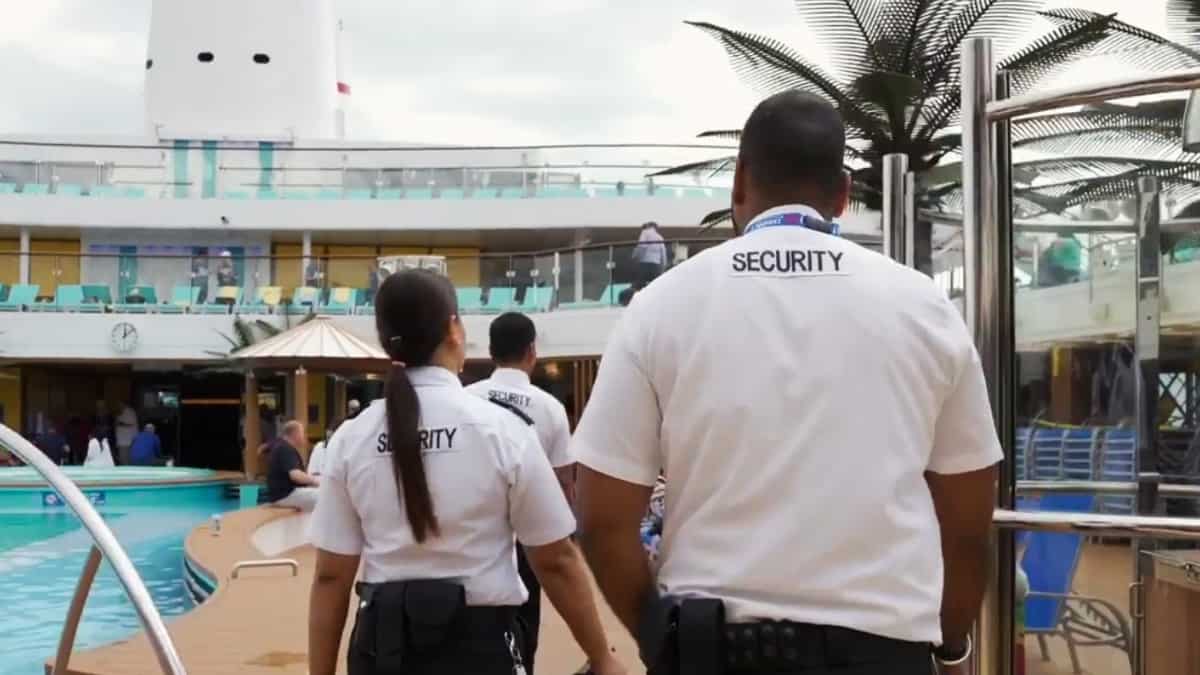
Carnival Cruise Line’s recent security enhancements have sparked a mixed public reaction, as reflected in media coverage. News outlets and social media platforms have been buzzing with discussions about the changes, providing insights into how the public perceives these upgrades. Understanding this public sentiment is crucial for Carnival to gauge the effectiveness of their strategies and tailor future improvements.Public perception of Carnival’s security enhancements is multifaceted, ranging from cautious optimism to outright skepticism.
News articles and social media posts have highlighted various perspectives, from concerns about the impact on the cruise experience to positive feedback regarding increased safety measures. This diverse feedback reveals a need for Carnival to effectively communicate the benefits of the new security protocols while addressing potential anxieties.
Public Reaction to Security Enhancements
Media coverage reveals a diverse public response to Carnival’s security measures. While some applaud the initiatives, others express concerns. The public’s reaction is influenced by various factors, including personal experiences, pre-existing anxieties about cruise travel, and the overall tone of the news reports.
Common Themes in Media Coverage
Several recurring themes emerged in news articles and social media discussions. These included concerns about potential delays, perceived impacts on the cruise experience, and the effectiveness of the new security measures in comparison to other cruise lines. Positive sentiments often highlighted increased safety and a proactive approach to security.
Summary of Public Opinion
Overall, public opinion on the effectiveness and impact of the security changes is mixed. While some appreciate the proactive approach, others remain hesitant, concerned about the potential for reduced convenience or disruptions to the cruise experience. This mixed feedback underscores the importance of Carnival’s ongoing efforts to communicate transparently and address any concerns effectively.
Sample Feedback from Online Sources
“I’m glad they’re taking security seriously, but I’m worried about the lines and delays. Hopefully, it won’t impact our cruise too much.”
- Twitter user*
“Carnival’s new security measures seem excessive. I’m not sure they’re necessary. My last cruise was fine without all this.”
*Online forum comment*
“The extra security measures are a huge plus. I feel much safer knowing they’re taking these steps to protect us.”
*Facebook post*
Potential Future Trends in Cruise Line Security
The cruise industry, like other sectors, is constantly adapting to evolving threats and technological advancements. As passenger volumes increase and new technologies emerge, cruise lines must proactively address potential vulnerabilities to maintain safety and guest confidence. This necessitates a forward-thinking approach to security, incorporating innovative strategies and tools.
Emerging Technologies Enhancing Security
The cruise industry is poised to integrate a variety of cutting-edge technologies into its security protocols. Biometric identification systems, advanced surveillance systems, and AI-powered threat detection tools are becoming increasingly viable options. These innovations promise to enhance security measures while also potentially streamlining operational efficiency.
- Biometric Identification: Facial recognition and other biometric technologies are rapidly advancing, offering a highly accurate method for verifying passenger identities. This can significantly improve the speed and efficiency of boarding processes, while also helping to identify potential security risks more effectively. Examples include automated passport verification systems, enhancing security and preventing fraudulent access.
- Advanced Surveillance Systems: Integrating sophisticated video analytics into surveillance systems can allow for real-time monitoring and detection of suspicious activities. Facial recognition software and heat mapping technology can identify individuals or groups behaving outside of established norms. This can lead to more timely intervention and response to potential threats. For instance, anomaly detection systems can flag unusual patterns in passenger movement, potentially identifying individuals attempting to breach security protocols.
- AI-Powered Threat Detection: Artificial intelligence algorithms can be used to analyze vast amounts of data, identifying potential threats and patterns that might be missed by traditional methods. This technology can predict and proactively address potential security issues before they escalate. For example, analyzing passenger data in combination with real-time surveillance footage could alert security personnel to potential dangers, such as individuals attempting to smuggle contraband or those exhibiting suspicious behavior.
Potential Future Security Trends and Their Impact
The cruise industry will face new security challenges in the future. These trends will require cruise lines to adapt their strategies to maintain a high level of safety and security.
| Potential Future Trend | Potential Impact on Cruise Industry |
|---|---|
| Increased use of predictive analytics in security operations | Proactive threat identification and prevention, allowing cruise lines to address potential risks before they materialize. This will contribute to a more secure and efficient cruise experience for all. |
| Integration of drone technology for surveillance and security monitoring | Enhanced ability to patrol large areas and monitor potential threats from the air. It will aid in quick response times, preventing incidents from escalating and enhancing safety. |
| Enhanced collaboration with international law enforcement agencies | Improved information sharing and coordination in addressing international threats, enabling a more robust global approach to cruise security. This cooperation will enable a stronger network of international support. |
| Implementation of blockchain technology for secure data management | Enhanced data security and transparency, protecting passenger information and streamlining various administrative processes, including verification and record keeping. |
Security Measures for Specific Areas
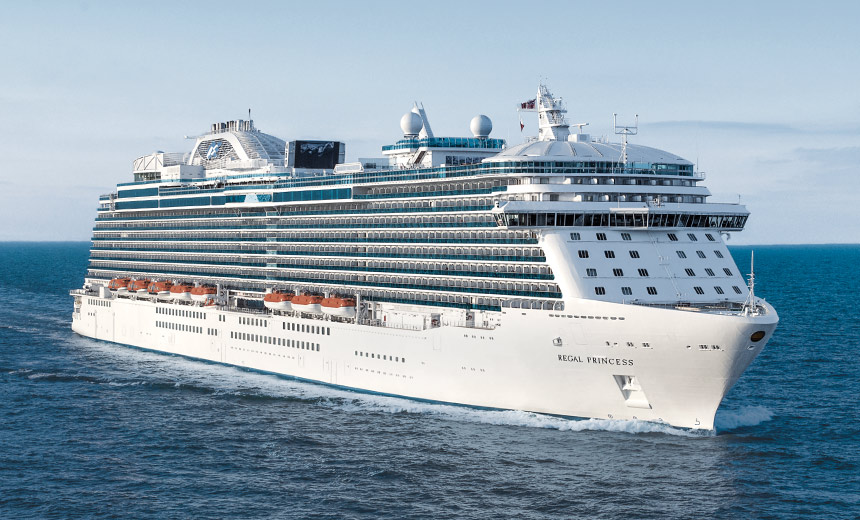
Carnival Cruise Line’s commitment to enhanced onboard security extends beyond general measures to encompass tailored protocols for diverse areas. This approach recognizes the varying vulnerabilities and potential threats present in different spaces, from the bustling public areas to the privacy of individual cabins. This focus on specific areas allows for targeted security measures, maximizing protection while minimizing disruption to the guest experience.
Public Spaces Security
Public areas, such as the main promenade, pools, and restaurants, are crucial zones requiring proactive security measures. These spaces experience high pedestrian traffic, making them susceptible to potential threats. Security personnel are strategically positioned throughout these areas, maintaining a visible presence and responding quickly to any suspicious activity. Surveillance cameras are widely deployed, providing a comprehensive visual record of activities and enabling swift identification of any anomalies.
Regular security checks and bag inspections are implemented to further deter potential threats.
Cabin Security
Cabin security is paramount, as it safeguards personal belongings and guest privacy. Every cabin is equipped with reinforced doors and locks, ensuring secure access. Guest safety is also enhanced by emergency communication systems within each cabin. Cabin access is strictly controlled, and entry logs are maintained for accountability and transparency. Cabin surveillance systems are deployed in high-traffic areas, providing additional security in case of incidents.
Dining Area Security
Dining areas are another critical area requiring particular attention. Security protocols in these spaces focus on safeguarding food preparation, minimizing the risk of contamination, and preventing theft. Trained security personnel monitor the flow of food and beverages, and implement strict procedures for handling and storing these items. Surveillance cameras are also deployed to provide real-time monitoring of dining areas.
Furthermore, rigorous background checks are performed on staff to ensure the integrity of the dining experience.
Carnival Cruise Line’s increased onboard security measures are a smart move, especially considering recent events. It’s inspiring to see how companies prioritize safety, and it’s great to see this reflected in the leadership development of their employees. This commitment to safety mirrors the dedication of dozens of graduates honored at a transformational leadership ceremony, highlighting the importance of well-trained personnel in ensuring a smooth and secure experience for all.
This approach will likely boost customer confidence in Carnival’s commitment to safety, a crucial aspect of the cruise industry. dozens of graduates honored at transformational leadership ceremony Ultimately, these security enhancements will help maintain a positive reputation for Carnival.
Specific Cabin Security Measure: Enhanced Cabin Door Security
This measure focuses on improving the security of cabin doors, which are often the first line of defense against unauthorized entry. The implementation involves installing reinforced, high-security locks that require multiple key turns or electronic access codes.
| Security Feature | Description | Diagram/Illustration |
|---|---|---|
| Reinforced Door | The door frame is reinforced with additional steel plates for increased resistance to forced entry. | (Imagine a diagram of a cabin door with highlighted steel reinforcements around the frame) |
| Multiple-Turn Lock | The lock mechanism requires multiple key turns to engage, making it more difficult to pick or force open. | (Imagine a diagram of the lock mechanism, emphasizing the multiple key turn points) |
| Electronic Access Control | The lock system is integrated with an electronic access control system, requiring a valid key card or code for access. | (Imagine a diagram of a key card reader mounted on the door, along with a keypad) |
“The enhanced cabin door security protocol is designed to deter unauthorized access and enhance the overall safety and security of guests.”
Final Conclusion
Carnival’s increased onboard security measures demonstrate a commitment to both guest safety and operational efficiency. While the specifics of these enhancements vary, they all contribute to a more secure and streamlined cruise experience. Looking ahead, the future of cruise line security will likely continue to evolve with technological advancements and emerging threats. The impact of these new security measures on guest satisfaction will be a key factor in the long-term success of these strategies.
Helpful Answers: Carnival Cruise Line Increases Onboard Security
What are some examples of the new security measures?
Specific measures haven’t been detailed in the Artikel. However, the document mentions enhanced surveillance, new boarding procedures, and staff training. These likely encompass a range of changes from increased security personnel to improved access control systems.
How might these changes affect my cruise embarkation/disembarkation time?
The Artikel suggests potential impacts on passenger flow, but specific time estimations aren’t available. Expect some adjustments to the typical process, but the extent of the change is unclear without further details.
Will these security measures affect my privacy?
The Artikel does not discuss privacy concerns in relation to these security measures. It’s important to check Carnival’s specific policies for details about how these security enhancements might impact personal data collection and use.
Are there any discounts available for passengers who opt-in for enhanced security?
No information about discounts or incentives related to these security measures is available.

